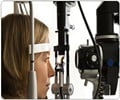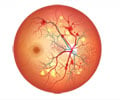
The study, led by Carnegie Mellon University neuroscientists, used various brain imaging techniques to show exactly how the visual cortex and parietal cortex send direct information to each other through white matter connections in order to specifically pick out the information that you want to see.
"We have demonstrated that attention is a process in which there is one-to-one mapping between the first place visual information comes from the eyes into the brain and beyond to other parts of the brain," said Adam S. Greenberg, postdoctoral fellow in the Dietrich College of Humanities and Social Sciences' Department of Psychology and lead author of the study.
Marlene Behrmann, professor of psychology at CMU and a renowned expert in using brain imaging to study the visual perception system explained "With so much information in the visual world, it's dramatic to think that you have an entire system behind knowing what to pay attention to."
"The mechanisms show that you can actually drive the visual system - you are guiding your own sensory system in an intelligent and smart fashion that helps facilitate your actions in the world," he stated.
For the study, the research team conducted two sets of experiments with five adults. They first used several different functional brain scans to identify regions in the brain responsible for visual processing and attention.
Advertisement
The second part of the experiment collected anatomical data of the brain's white matter connectivity while the participants had their brains scanned without performing any tasks. Then, the researchers combined the results with those from the functional experiments to show how white matter fibers tracked from the regions determined previously, the visual cortex and the parietal cortex.
Advertisement
The researchers used a technique called "diffusion spectrum imaging," a new procedure pioneered at Carnegie Mellon and the University of Pittsburgh to generate the fiber tracts of the white matter connectivity.
This method was combined with high-resolution tractography and provides scientists with better estimates of the hard-wired connections between brain regions and increased accuracy over conventional tractography methods, such as those typically used with diffusion tensor imaging.
"The work done in collaboration with the University of Pittsburgh researchers exploits a very new, precise and cutting edge methodology," Behrmann said.
Greenberg added, "Because we know that training can alter white matter, it might be possible, through training, that the ability to filter out irrelevant or unwanted information could be improved."
The finding has been published in the Journal of Neuroscience.
Source-ANI













